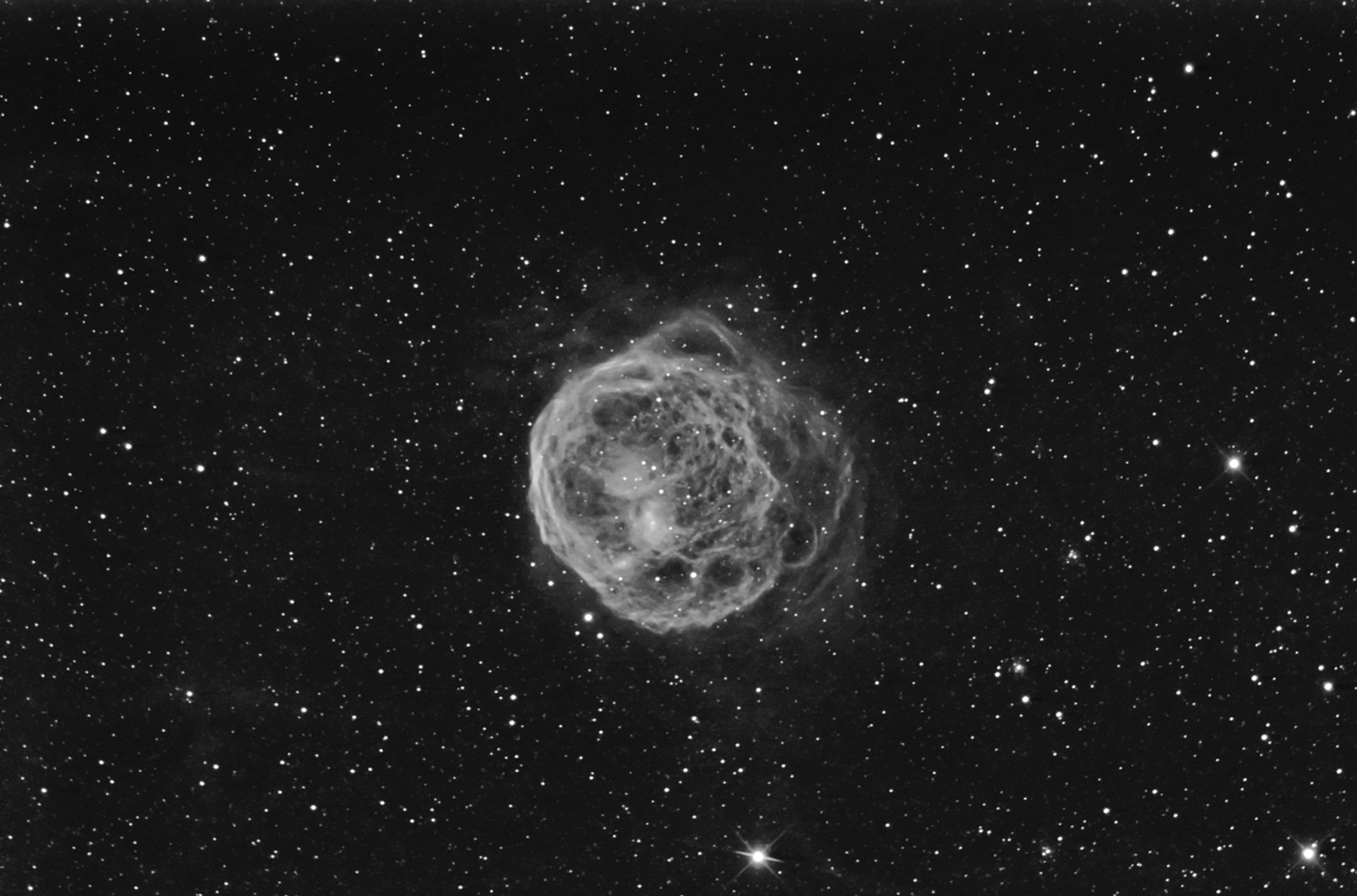
Supernova remnant Henize N70 in Hydrogen alpha by Steve Crouch
using a 31.75 cm Ritchey-Chretien telescope with SBIG STL6303E CCD camera
(Adapted from Answers.com) N70 (AKA Henize 70 and DEM301) is an example of a large cavity in the interstellar medium created by the explosion of several supernovae in the same region of space, typically belonging to the same OB association. Because the lifetimes of massive O and B stars are measured in only tens of millions of years, after one supernova has swept clear a bubble around itself, there isn't enough time for the interstellar medium to back-fill the cavity before other stars explode in the same region. Each subsequent supernova will rejuvenate the cavity left by the previous ones, causing the formation of a superbubble with a diameter of 150 to 300 light-years or more. N70 is about 300 light years across.

Supernova remnant Henize N70 in Hubble palette by Steve Crouch
using a 31.75 cm Ritchey-Chretien telescope with SBIG STL6303E CCD camera
Text from Steve's web site on N70 at caption for image above

NGC 2014-2040 area (Henize nebula N55) in Hydrogen alpha by James McHugh using an Astro-Tech 12" Newtonian telescope and STL-11000M CCD camera (4x20' subs)